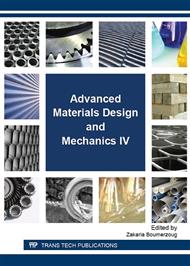p.13
p.18
p.22
p.28
p.33
p.38
p.42
p.51
p.59
Effects of Aging Treatment and SiCp Addition on Compressive Performance and Corrosion Behavior of Mg-10Zn-0.6Zr Alloy
Abstract:
This paper addresses the collective effects of aging treatment and addition of SiC particles (SiCp) on both the compression performance and corrosion behavior of Mg-10Zn-0.6Zr alloy through experimental study. The results indicate that aging treatment at 180°C for 18h while adding SiCp can improve both the compressive strength and the corrosion rate of Mg-10Zn-0.6Zr alloy. The microstructure analysis and corrosion mechanism analysis justify the effects observed. Specifically, the improvement of compressive strength is due to the fine grain strengthening and second phase strengthening. Acceleration of corrosion is attributed to two factors. The first is the precipitation of the second phase after aging treatment. The second is the morphological changes of corrosion products resulted from aging treatment and addition of SiCp.
Info:
Periodical:
Pages:
33-37
Citation:
Online since:
November 2016
Authors:
Keywords:
Price:
Сopyright:
© 2017 Trans Tech Publications Ltd. All Rights Reserved
Share:
Citation:


